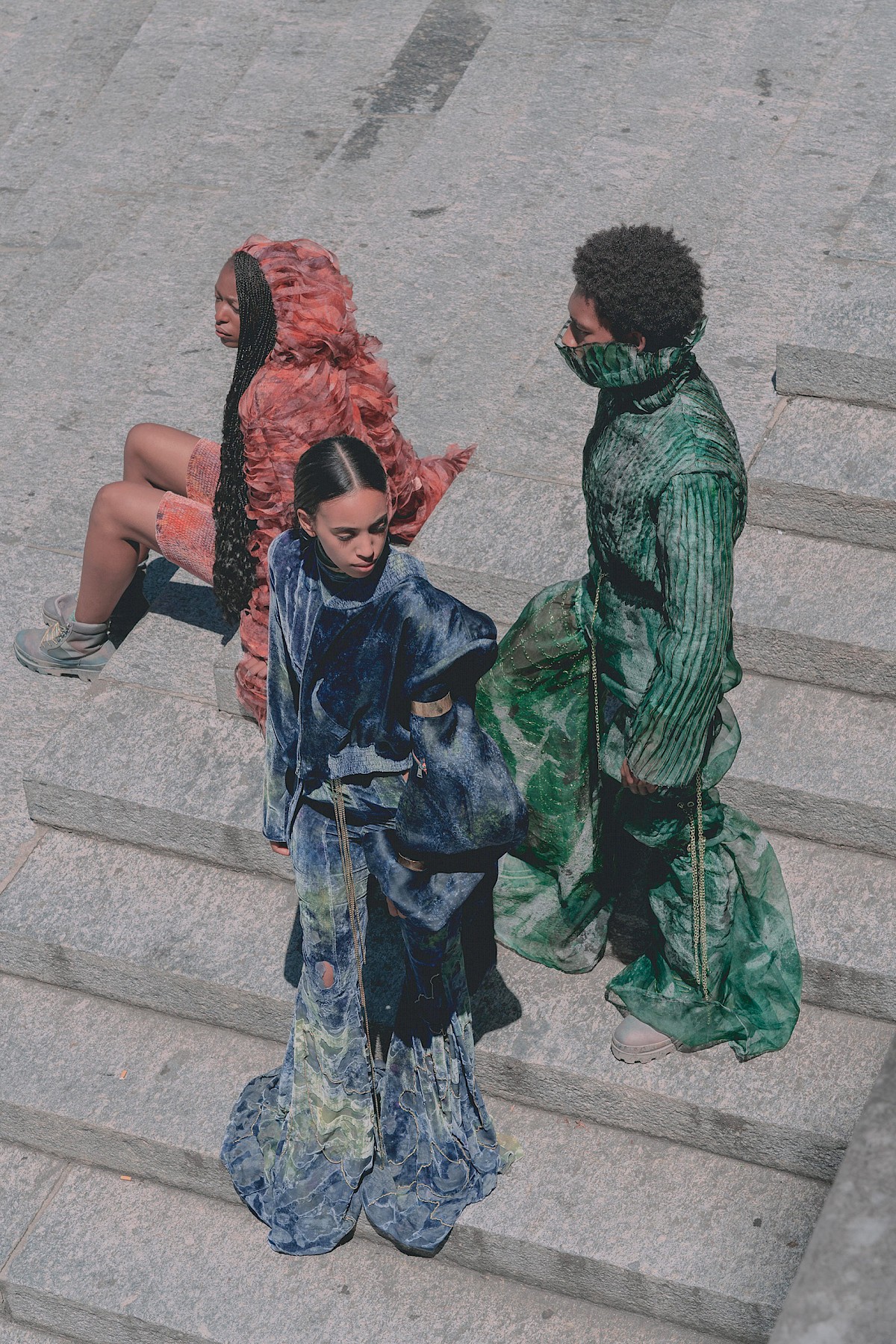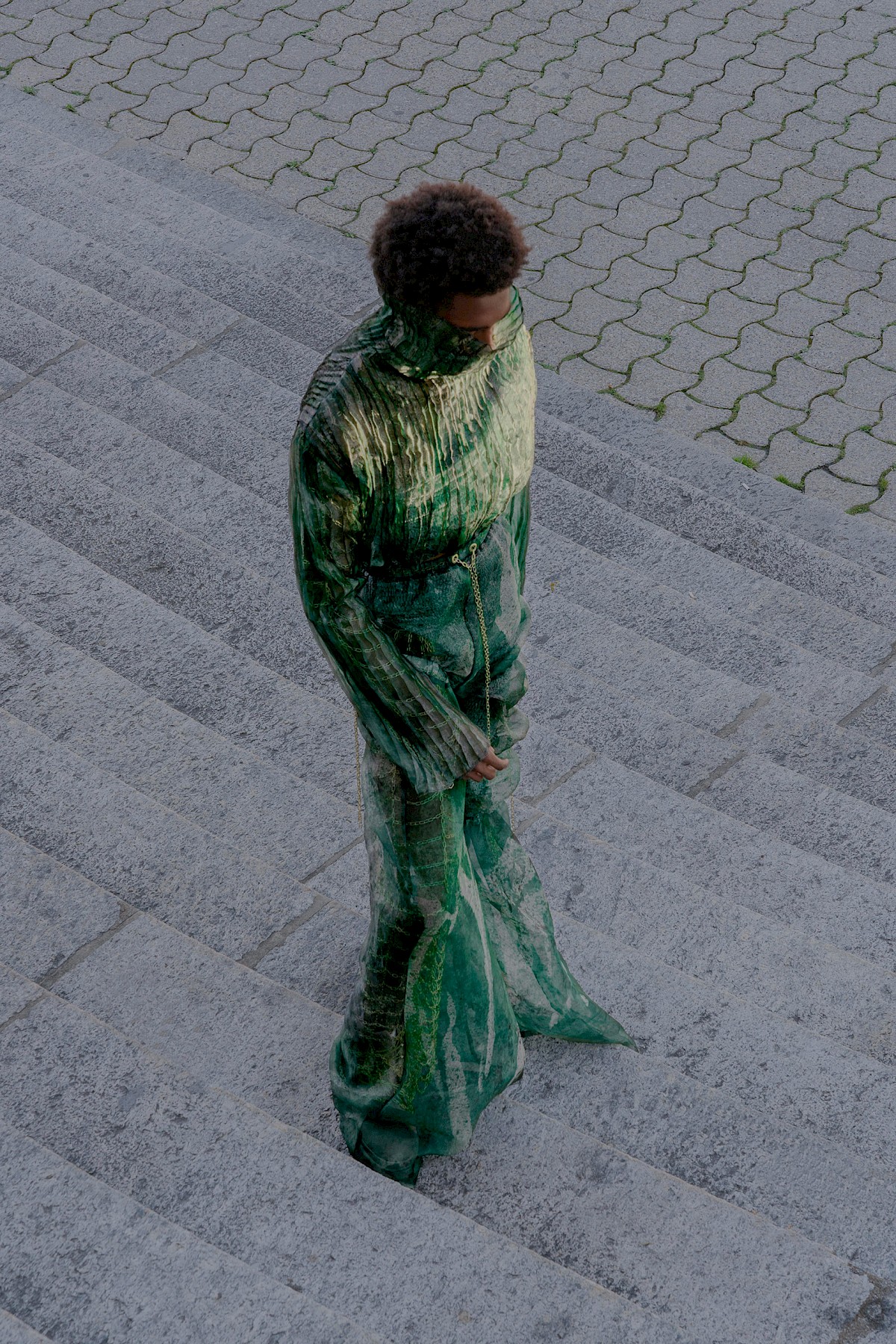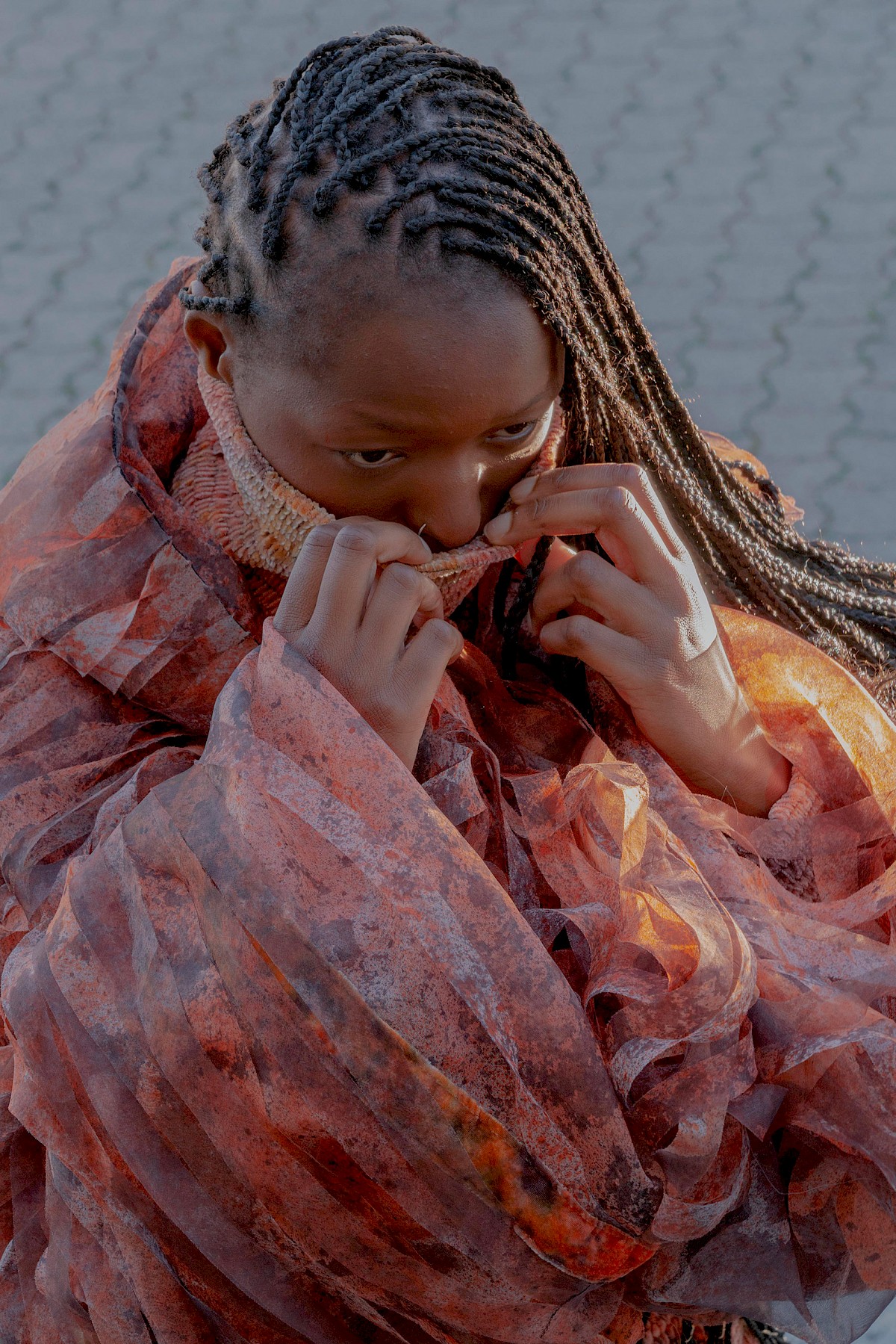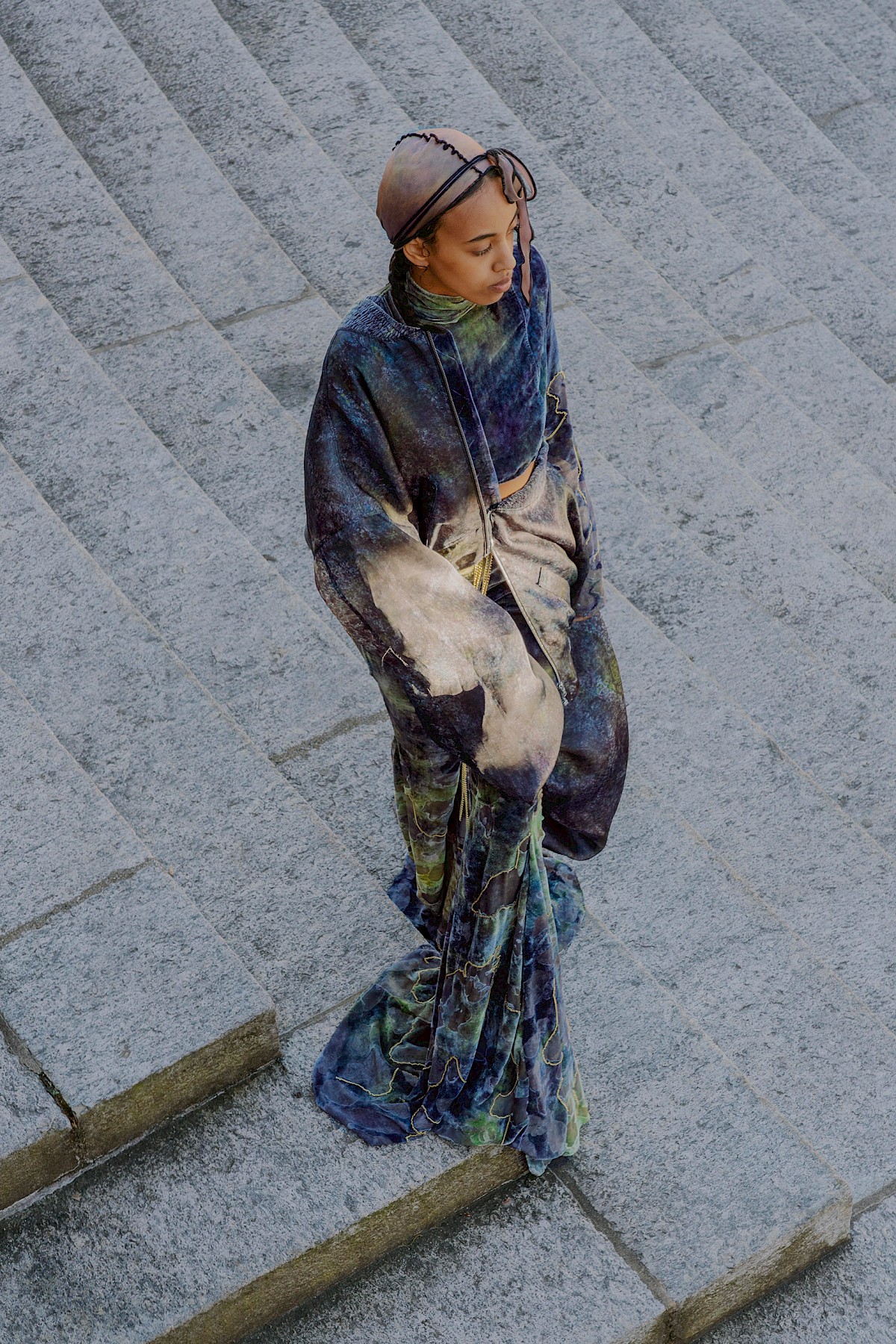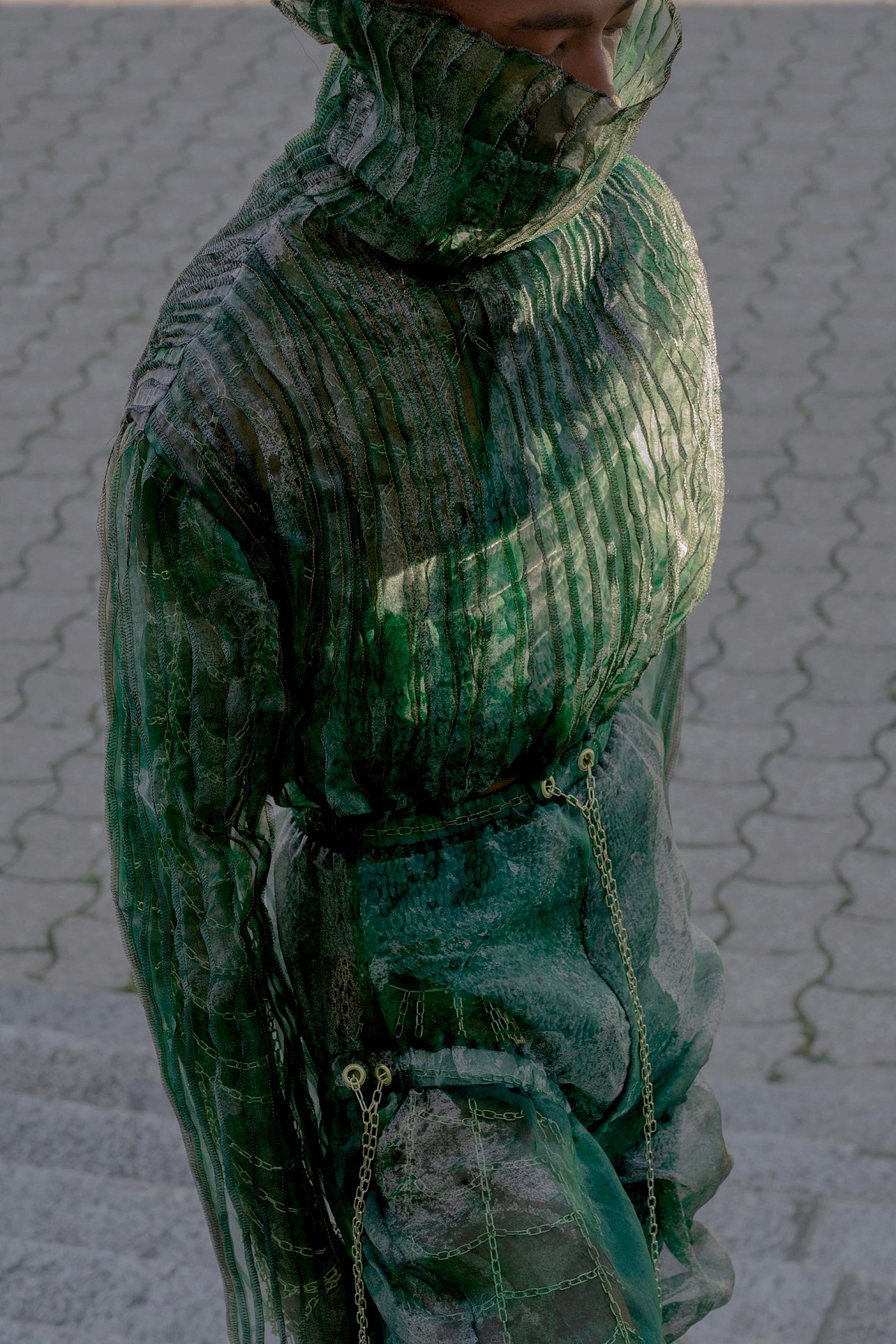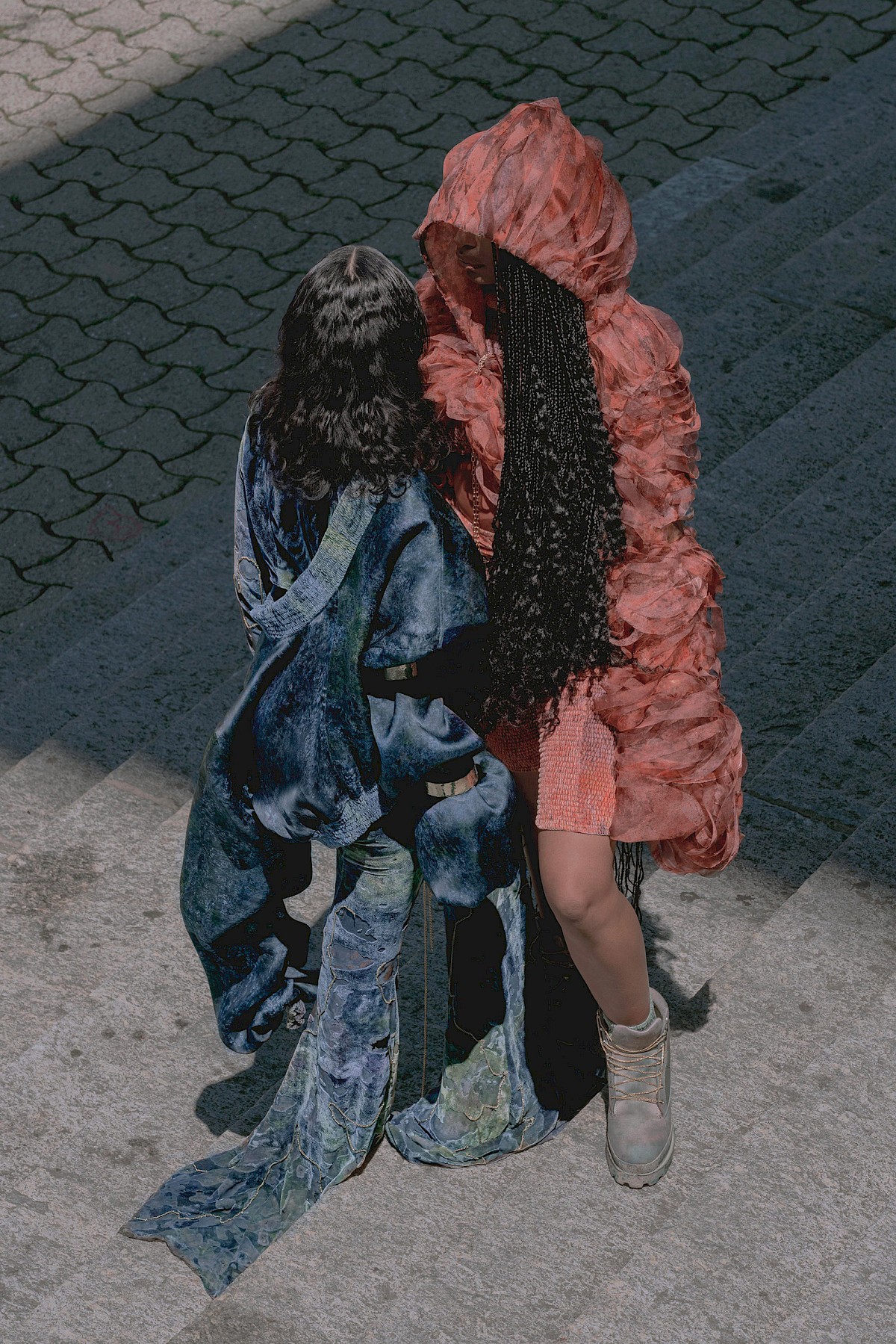visible/invisible
Ma collection intitulée visible/invisible est un projet autobiographique. Je m’appelle Brigitte et mon histoire est celle d’une femme racisée qui est née et a grandi en Europe. Ma mère, jeune veuve, a fui l’Angola touché par une guerre civile pour demander l’asile politique en Suisse. En grandissant ici, j’ai très vite constaté qu’il nous était demandé à nous, personnes originaires d’une autre culture, de nous intégrer et de correspondre à certaines attentes. Or, il est très difficile de se fondre dans la masse quand notre différence se lit sur notre peau. En tant que femme noire, je ne ressemble pas aux canons de beauté dictés par la société occidentale. Par ailleurs, le poids de la charge raciale induit très souvent un désir d’invisibilité. J’ai très vite intégré ce sentiment d’invisibilité, mais j’ai également dû affronter le fait que, en tant que corps noir, il m’est impossible de passer inaperçue au sein d’une société majoritairement blanche. J’explore ces tensions dans ma collection. Elle joue sur les notions de visibilité et d’invisibilité et s’appuie sur la notion du « flamboyant » que j’emprunte à la communauté queer racisée. Pour moi, il représente une façon esthétique de revendiquer son identité et une visibilité par le biais de l’apparence. Ce terme est souvent utilisé à des fins politiques, puisqu’il s’agit de donner à voir son corps et donc de faire en sorte qu’il compte.
The starting point for my collection is my personal history. My name is Brigitte, I was born and grew up in Europe and my story is that of a woman whose body has been racialized. My mother, a young widow, fled her country of origin, Angola, following its civil war and claimed political asylum in Switzerland. Growing up here, I quickly noticed that being from a different culture, we were asked to integrate ourselves and to conform to certain expectations. It is difficult however to blend in when your difference is read on your skin. As a black woman, I don’t conform to the beauty norms of the society in which I live. Early on I felt both like I was invisible and that as a black body I would never be able to go unnoticed in a society that is mostly white. Moreover, the mental charge of race often causes people who are racialized to desire a form of invisibility. Working through these tensions, the collection plays on notions of visibility and invisibility, building on the racialized queer community’s concept of the fabulous. Fabulousness works as a strategy of political resistance since it means making one’s body visible and therefore making it matter.
